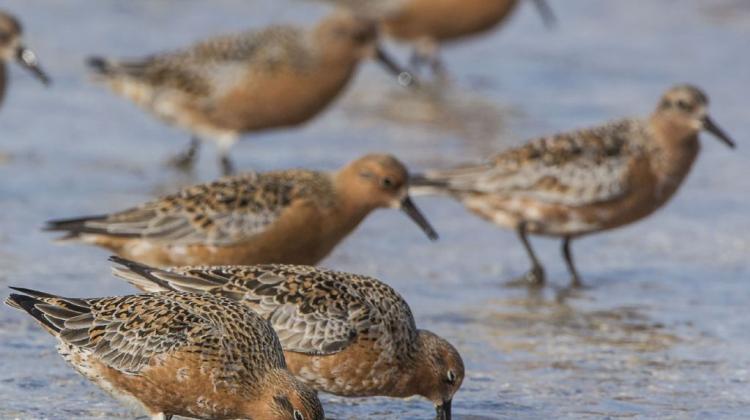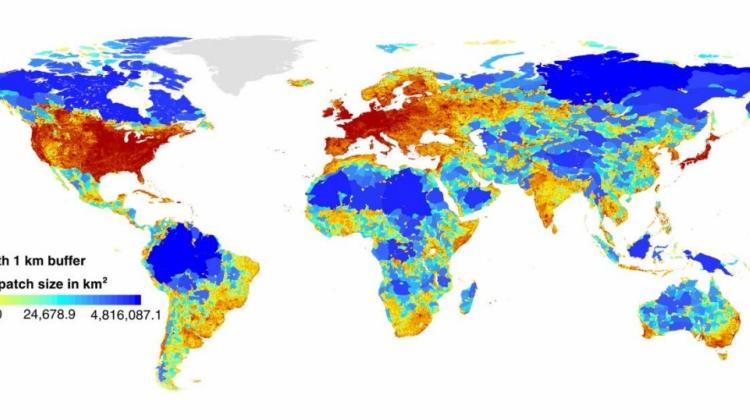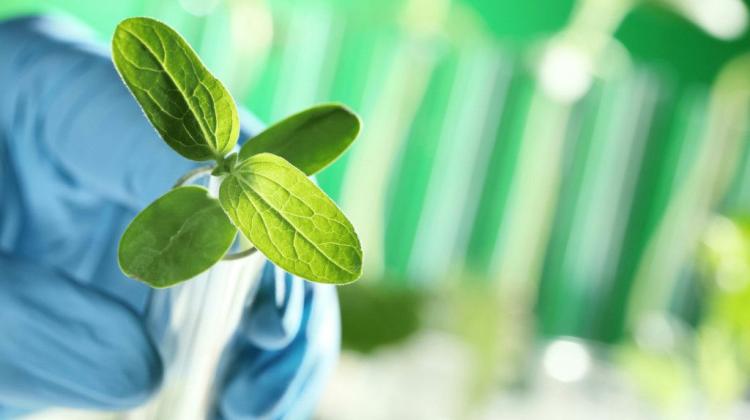The red knot does not reach as far as it used to. Warming is to blame
 Red knot. The bird looks different in breeding plumage - it has cinnamon throat and breast, unlike its winter and youth plumage, which is less spectacular. Photo by Jan van de Kam, NL
Red knot. The bird looks different in breeding plumage - it has cinnamon throat and breast, unlike its winter and youth plumage, which is less spectacular. Photo by Jan van de Kam, NL
Due to global warming a certain species of sandpiper - red knot - copes less well with its environment - it has a shorter beak and instead feeding on mussels, it must survive on rhizomes of plants. This surprising relationship has been demonstrated by scientists, including Polish researchers.
The red knot (Calidris canutus), protected bird from the sandpiper is not very common or easily recognized in Poland, because it only passes through our country. This species lays its eggs in the far north, in the Taymyr Peninsula in Siberia, and winters in western Africa, including Mauritania. However, during flights knots sometimes rest on the Polish coast. Researchers from the University of Gdańsk for three decades have been taking advantage of this opportunity to examine these birds - they measure the birds and ring them.
Their studies, as well as measurements of researchers from other teams show that the birds are now smaller than before. Scientists were curious of the reasons for this trend. Their research - led by Jan van Gils of the Netherlands Institute for Sea Research - has been published in the prestigious journal "Science". The study involved scientists from the Netherlands, Australia, France, Poland and Russia.
Researchers found that the smaller size of the red knot is linked to global warming. It makes Siberian snow melt faster than before. Analysis of satellite images showed that in the last 33 years the snow cover in the Taymyr breeding grounds of the red knot melts earlier each year - by about half a day. On a scale of three decades, the difference accrued to two weeks. This in turn, means earlier awakening of invertebrates - the basic food of young red knots.
Meanwhile, the breeding birds has not been accelerated. Young birds hatch after the most abundant appearance of invertebrates. Scientists believe that due to the shortage of food the young birds do not develop as well as before. And this is reflected in the size of their bodies.
But that is not all. The length of the beak is connected to the size of the body. And this is crucial for obtaining food on wintering grounds. Red knots in Mauritania feed on wetlands. In Africa, the base of their diet were mussels, buried in the thick mud, usually at a depth of approx. 3-4 cm. "The length of the red knot\'s beak used to be adapted to this depth" - one of the authors, Prof. Włodzimierz Meissner from the Faculty of Biology at the University of Gdańsk noted in an interview with PAP. According to him, a few millimetres shorter beak means that the knots have limited access to bivalve molluscs. "And the mud there is so thick that knots can not put their heads in it" - explained the researcher.
"Birds that cannot reach to bivalve molluscs, must feed on rhizomes of sea grass. And we know that this food has lower calorie content - said Prof. Meissner. - Due to this, the birds do not cope as well as before, which translates into clear red knot population decline that we are now seeing".
The researchers connected the facts that seemed remote at first glance. They proved that due to faster melting of snow in Siberia the birds find it more difficult to get food in the West Africa.
"We anticipate that changes in the size and proportions of the body, which result in negative changes in the red knot population, in the future may become common and extend to other species of birds that nest in the Arctic. These changes have very serious ecological consequences and require special attention of scientists" - the authors of the publication summarize their findings.
PAP - Science and Scholarship in Poland, Ludwika Tomala
lt/ zan/ mrt/
tr. RL
Przed dodaniem komentarza prosimy o zapoznanie z Regulaminem forum serwisu Nauka w Polsce.


















